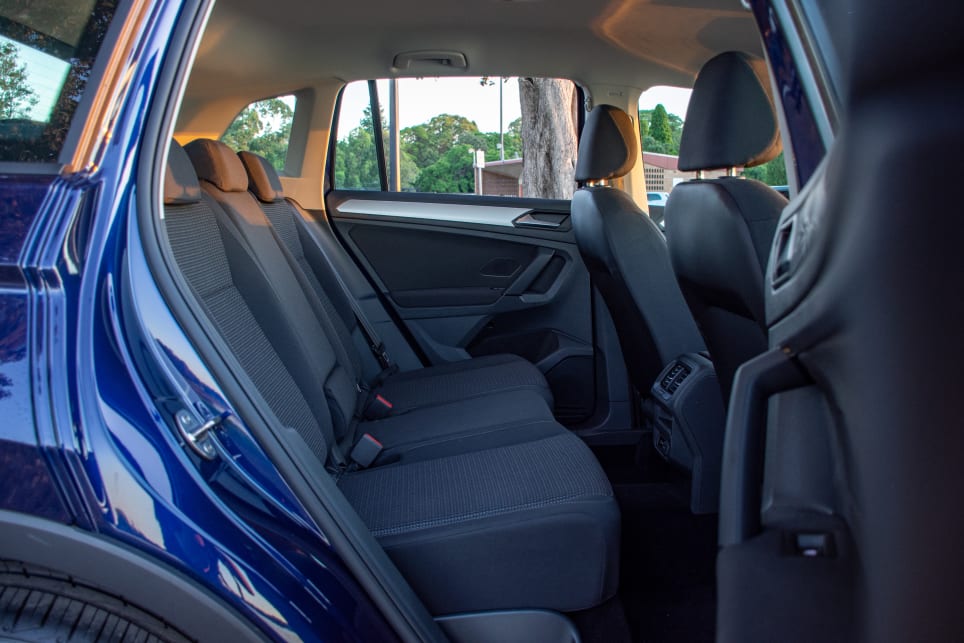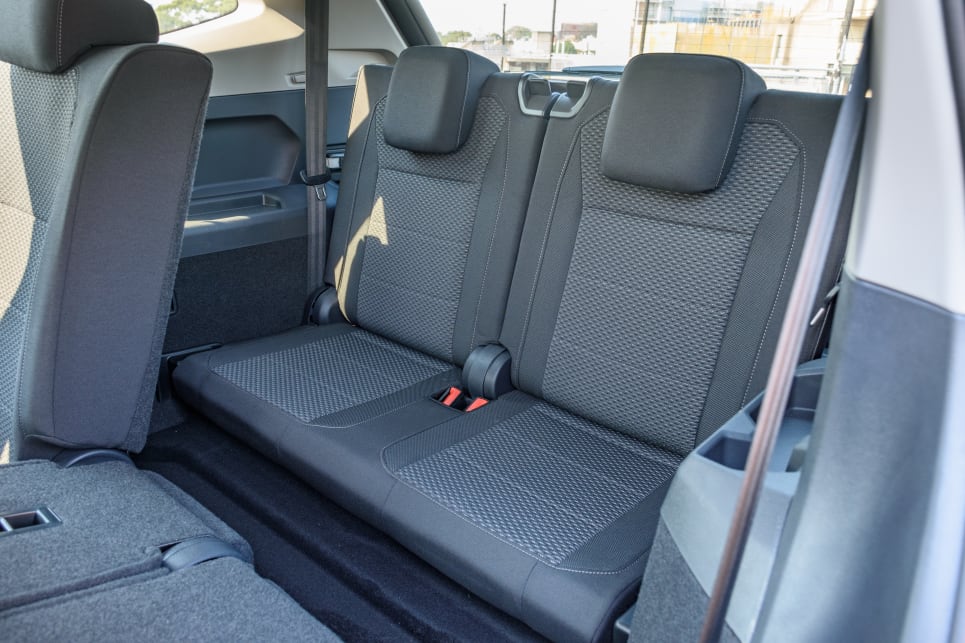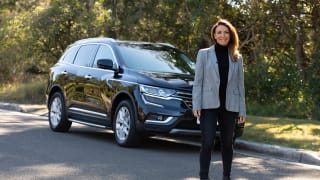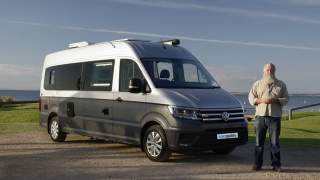There’s lots to like about VW’s Tiguan, like its slick fit and finish, great easy-to-use standard equipment, its spacious interior (it's also available in a seven-seat Allspace layout), and its all-around polish when it comes to the experience behind the wheel.
VW Tiguan 2020 review
- Volkswagen Tiguan
- Volkswagen Tiguan 2020
- Volkswagen Tiguan Reviews
- Volkswagen Reviews
- Volkswagen SUV Range
- SUV
- Volkswagen
- Family

Volkswagen’s Tiguan has established itself as the major European rival to mainstream Japanese and Korean mid-size SUVs.
It has been over three years since the launch of the current model, and six months since the seven-seat Tiguan Allspace version went on sale, which means you’ve built up an extensive list of frequently asked Tiguan questions.
We’ve collated and answered them below with the aim of helping you make an informed decision about whether you should consider the Tiguan and which variant might best suit your needs.
What do we dislike?
We don’t like the fact that the full safety suite is optional on lower tier variants, and how relatively expensive the range can get as you walk your way up. Turbo-lag is an issue on variants with the lesser 110TSI engine, and while we like the option of having seven-seats, the Allspace’s two extra positions offer limited room for adults.
How much does a VW Tiguan cost?
The Tiguan range has grown to include an extensive list of variants. To break the price list down, there are three engine choices, across three variants.
The base 110 TSI 1.4-litre turbo-petrol is front-wheel drive (FWD) only and available in base Trendline ($34,490 rrp) or Comfortline ($38,990) trim.
Next up is the 132 TSI 2.0-litre turbo-petrol, which is available only as a Comfortline AWD at a price of $43,490.
At the top of the range is the most powerful 162TSI 2.0-litre turbo AWD. The 162TSI 4Motion is only available in top-spec Highline trim at $50,990.
The seven-seat Allspace is available with all three engines, but only as a Comfortline (110TSI FWD - $40,490, 132TSI AWD - $44,990) or as a Highline (162TSI AWD - $52,490).
The Tiguan range is generally slightly more expensive than rivals, though does make up for it with generally higher equipment inclusions. You could consider the Tiguan as a direct rival to other popular mid-sizers also capable of having seven seats. These include Honda’s CR-V, Nissan’s X-Trail, or Skoda’s Kodiaq.
Volkswagen Tiguan 2020 price
| 110 TSI (FWD) | 132 TSI (AWD) | 162 TSI (AWD) | |
| Trendline | $34,490 | -- | -- |
| Comfortline | $38,990 | $43,490 | -- |
| Comfortline Allspace | $40,490 | $44,990 | -- |
| Highline | -- | -- | $50,990 |
| Highline Allspace | -- | -- | $52,490 |
How much storage space does the Tiguan have?
The Tiguan is generally very practical, with plenty of storage room in every variant, especially the Allspace seven seat versions which benefit from an increased length in the floor.
All Tiguans have solid boot space dimensions. Regular five-seat versions can make use of up to 615 litres (VDA) of storage space with the seats up, while seven seat Allspace versions get 700L with the third row down.

With the second row stowed in the regular variants there’s 1655L of luggage capacity on offer, and in the same configuration in the Allspace, there’s 1775L to make use of. With all three rows deployed, the Allspace has 230L left to use.

The second row of all Tiguan models is on rails, allowing for a more flexible storage space, or extra legroom for the third row in seven-seat versions. Leg- and headroom are still tight for adults in the third row, no matter how you configure the Allspace.
Compared to competitors though, the Tiguan is generally well-sized.

You can further enhance the practicality of the Tiguan by adding a roof rack from the accessories list with a load capacity of 70kg, to which you can also apply a 'premium roof box' in 340- or 460-litre versions.
The Tiguan comes with compatibility for roof rails as standard.
There are a choice of three cargo liners, a heavy duty tray or a simple liner for protecting the carpeted floor, as well as a smooth hardwearing plastic ‘loadliner’ which also has walled edges to stop items or dirt escaping the edges.

There is no optional cargo cover for the Tiguan, with all variants having a standardized removable parcel shelf in a carpeted finish.
What are the key stats & specs of the Tiguan engines?
The Tiguan is currently available with the choice of three engine specifications in Australia.
The first is the entry-level 110TSI. This is a 1.4-litre petrol four-cylinder engine which produces a power rating of 110kW and 250Nm of torque. All 110TSI variants are front-wheel drive and mated to six-speed dual-clutch automatic transmission.

Next up is the mid-spec 132TSI engine which is a 2.0-litre four-cylinder turbo petrol. It produces 132kW/320Nm. All 132TSI varaints are AWD and are mated to seven-speed dual-clutch automatic transmissions.
At the top of the Tiguan range is the 162TSI. This is also a 2.0L engine with a turbocharger, but has increased outputs at 162kW/350Nm.
In each case the engine size may be smaller than some competitors, but the Tiguan’s engine specs are more modern and boast equal if not better power outputs.
All Tiguan engines are now turbo-petrols. There are no supercharger variants, and turbo-diesel versions were discontinued in 2018.
Those diesel variants were the 110TDI (110kW/340Nm) and 140TDI (140kW/400Nm). They were axed due to Volkswagen globally reducing its number of diesel cars after the 'dieselgate' incident. To comply with Euro6 emissions ratings, both diesel Tiguans are fitted with a diesel particulate filter (DPF).
A plug-in hybrid (PHEV) Tiguan currently exists for the Chinese market with the 110TSI powertrain mated to a 85kW electric motor, however VW Australia has previously told CarsGuide that it intends to skip PHEV models in our market, preferring its incoming I.D. range of electric vehicles.
What colours is the VW Tiguan available in?
There are currently five paint options in the five-seat Tiguan range, with an additional colour available on the Allspace.
You can choose the Tiguan in 'Pure White' at no extra cost, while 'Atlantic Blue', 'Indium Grey', 'Tungsten Silver', or 'Deep Black' will add $800 to the price tag.
The Allspace is available in a slightly different set of colours. Pure White is again the no-cost base colour, but the seven-seater is also offered in 'Blue Silk', 'Platinum Grey', 'Pyrite Silver', 'Ruby Red', and 'Deep Black.'

There is no green, orange, or yellow available in the Tiguan range. These colours may become available on the more youth-focused T-Roc small SUV set to hit Australia in August.
What is the VW Tiguan towing capacity?
All Tiguan models are available with a towbar attachment. Load capacity varies by engine.
The base 110TSI is capable of pulling a 750kg unbraked, or 1800kg braked trailer, while the mid-grade 132TSI and top-grade 162TSI are capable of 750kg unbraked or 2500kg braked, thanks to their increased outputs.
The max towball download of all Tiguan variants is 200kg (theoretically limiting your safe braked towing capacity to 2000kg regardless of variant).
How does the Tiguan interior look & feel?
The Tiguan has one of the nicer interiors in the mainstream mid-size SUV market in Australia.
This is owing to a modern dash design, quality materials used throughout, and multiple soft-touch surfaces.
See our interior images for more.
All Tiguans have nice touches which remind you that you’re in a premium Euro car, like a leather-trimmed steering wheel, side bolstering even on the base cloth trim seats, and soft-touch surfaces for elbows throughout.
The interior improves the further you walk up the range, with higher specs getting full leather trim and even luxe touches like ambient interior lighting.
What are the dimensions of the Tiguan?
Regular five-seat Tiguan variants are 4486mm long, 1839mm wide, and 1658mm high.
Allspace variants increase in size to 4701mm long and 1665mm high but are the same width.
The Tiguan weighs in from 1499kg for the base 110TSI five-seater. VW does not publicly state a gross vehicle weight (aka gross vehicle mass – GVM) for its passenger vehicles, so if you're loading it up it's best to play it safe.
Are there any must have accessories?
The Tiguan is available with many factory accessories on each of the trim levels.
These include luggage liners, rubber floor mats, aesthetic body elements, side steps, a tow kit, and a series of attachments to go with its OEM roof racks.
There are also some neat tidbits, like luggage boxes to suit the boot, and a choice of coathanger, bag hook, or tablet holder for the backs of the front seats.
The Tiguan range has four sets of wheels, although the 20-inch ‘Suzuka’ rims are the only optional fit as part of the R-Line package.
Does the VW Tiguan come in diesel?
The Tiguan is no longer offered in diesel in Australia, since the discontinuation of diesel variants in 2018.
In the diesel vs petrol argument, the diesels produced far more torque, but also required a particulate filter and more expensive service costs.
VW has no plans to introduce a plug-in hybrid variant either, instead preferring to wait for a mid-sizer EV from its upcoming I.D. electric range.
There is also no LPG version of the Tiguan.
Which configuration of the Tiguan is the best?
Our pick of the Tiguan range is either the base 110TSI Trendline ($34,490) with the driver assistance package ($1600), as this is all the car most people will need.
However, understanding that many will have the desire for more power, the 2.0L 132TSI Comfortline ($43,490) with driver assistance package ($1600) is a close second.
On a model vs model basis, the Tiguan is not quite as good value as some competitors, given its relatively tall pricing, which makes the $50,990 top-of-the-range 162TSI tough to recommend.
In a model comparison with popular rivals, features like electronically adjustable seats, leather trim and the full safety suite can be had at a lower price point.
Does the VW Tiguan have any common problems, issues or faults?
As we’ve only tested brand new examples of the Tiguan, we can’t comment on how it will last long-term. While VW products have had automatic transmission issues in the past, there’s no guarantee newer transmissions on today’s cars will have the same problems.
For more user complains and questions on a range of issues from rust to engine and turbo problems, go to our Tiguan problems page to see if your query has already been answered.
Thankfully our problems page hasn’t received any issues regarding clutches or transmissions in some time, nor has it received any issues on the topic of suspension problems, diesel engines, or injector issues.
How much does the Tiguan cost to service?
When purchased new, the Tiguan is serviced most cost-effectively through VW’s 'Care Plan' service packs.
The packs are available in three- or five-year plans and pulling maintenance cost into one fixed bundle can also be added on to the car’s finance plan.
Service cost changes by variant. The three-year plan is $1200, and the five-year plan is $2140 for variants with the base 1.4-litre turbo 110TSI engine.
For variants with either the 132TSI or 162TSI 2.0-litre turbo engine, the costs are $1350 for the three-year plan or $2300 for the five-year plan.
Service intervals come at 15,000km or 12-months, whichever occur first. The plans are the best choice for smoothing out charges which can suddenly become more expensive from the 30,000km service mark when not bundled in.
Is the VW Tiguan 4wd and can you use it off-road?
Some higher-spec variants of the Tiguan are AWD wearing Volkswagen’s 4Motion branding.
Important to remember this is not the same as 4x4 or 4-wheel drive which implies a low-range transmission. All-wheel dive variants do have terrain control features, however, which alter the drivetrain for some form of off-road capability on certain surfaces.
Lesser Tiguan variants are front-wheel drive. There are no 4x2 rear-wheel drive Tiguan variants.
For those who wish to take their Tiguan off the beaten track, some figures they’ll want to be aware of include the ground clearance which ranges from 191mm to 201mm depending on variant. The Tiguan does not have a publicly-stated wading depth, so we wouldn't recommend testing the limits for yourself.
We even found some third-party suppliers who will offer mild lift kits for Tiguans, however they specify that these kits are mainly to increase clearance for towing and not necessarily off-roading purposes.
What is the VW Tiguan fuel consumption?
The Tiguan has a spread of official combined fuel consumption figures across its variants.
All 110TSI variants have a rated fuel consumption of 7.1L/100km, 132TSI variants have a fuel consumption of 7.5L/100km, while 162TSIs have a fuel consumption of 8.1L/100km.
Allspace variants use slightly more fuel, with the 110TSI and 162TSI increasing 0.2L/100km and the 132 TSI increasing 0.4L/100km respectively.
Your mileage may vary on those numbers as ours did. Our weekly test of a 110TSI Trendline, for example, returned a fuel figure of 8.5L/100km, and a weekly test of the larger 110TSI Allsplace returned 9.1L/100km.
There’s no special ‘eco mode’ to abate those numbers, but all Tiguans get a stop-start system to help reduce fuel consumption when idling or in heavy traffic.
For those curious about the diesel fuel economy on those now-discontinued variants, the 110TDI and 140TDI were rated at 5.9L/100km (around 16.9 km l).
What features come standard with the VW Tiguan?
Standard features even on the base 110TSI Trendline include the aforementioned tech and multimedia items, cloth seats, LED DRLs with halogen headlights, 17-inch alloy wheels, a tyre pressure monitoring system, air conditioning, rain-sensing wipers, a multi-function display in the instrument cluster, auto dimming rear vision mirror, and heated wing-mirrors.
Going up to the mid-grade Comfortline adds sat nav to the media system, improved interior trim, floor mats, LED headlights, 18-inch alloys, keyless entry with push-start ignition, electrically operated tailgate, fold-out tray tables for the rear passengers, draw storage under the front seats,
The top-spec 162TSI adds adaptive chassis control, an upgraded media system with GPS and voice control, premium LED light fittings, 19-inch wheels, leather seat trim, climate control, electrically adjustable and heated front seats, and paddle-shifters. It is the only car that can be optionally fitted with the R-Line pack which includes 20-inch alloys, black interior trimmings, an overhauled exterior look, dynamic steering, and Vienna leather.
Active safety items on all cars include auto emergency braking front and rear, ESP, lane keeping assist, park assist sensor suite, and driver attention alert.
Blind spot monitor, adaptive cruise control, and rear cross traffic alert are part of the optional safety pack on all but the top 162TSI. The Tiguan range does not have traffic sign recognition.
Of course, all the standard expected items like light city-friendly power steering, electronic stability program (ESP), seven airbags, a reversing camera, parking sensors, air conditioning, Bluetooth and cruise control come standard even on the base car. A panoramic sunroof is part of a pack on all Tiguans except the 162TSI where it is an individual option.
What features can you upgrade?
The Tiguan’s base features which are upgraded simply by adding options packs or walking up the range include tinted windows, power tailgate, adaptive cruise control, alloy wheels (from 17-inch up), halogen to LED headlights (there are no bi-xenon lights in the Tiguan range), the body kit through individual options like side steps or the R-Line kit, the rear spoiler as well as front and rear diffuser on the 162TSI.
Despite extra chrome trimmings on the R-Line kit, there’s no chrome exhaust tips package
VW doesn’t offer OEM off-road accessories like a bull bar, light bar, underbody protection upgrades, an auxiliary heater, or all-terrain tyres (and matching wheel arch extension) for the Tiguan, but these may be able to be fitted by a third-party. Keep your warranty and the car’s safety sensors in mind when making these modifications, however.
Despite multiple luxury options, there’s no heated steering wheel for the Tiguan.
You also cannot upgrade from the space-saver spare from the factory, with a basic slim spare and matching tool kit being the only things under the boot floor.
VW occasionally runs special edition sport models, so keep an eye out for those if you’re looking for something a bit more individual.
Does the Tiguan have Apple Carplay & Andriod Auto?
All variants of the Tiguan support Apple CarPlay and Android Auto connectivity via an 8.0- or 9.2-inch multimedia touch screen.

The Tiguan range does not yet have wireless charging or a WiFi hotspot, but does have a storage bay suitable for most iPhone or Android devices smartly placed under the climate controls.
How good is the Tiguan's sound system & Infotainment set-up?
Aside from the aforementioned phone connectivity, the multimedia system is backed by gadgets like a CD player hidden in the passenger side glove box, which also has up to two SD card slots and up to 10GB of internal storage. All Tiguan stereo systems are Bluetooth enabled but do not have DAB radio or a DVD player.
The 'Sound & Vision' technology pack upgrades the sound system to a Dynaudio 9 speaker system with a 400W output and subwoofer.
Does the Tiguan have a manual or automatic transmission?
There are no longer manual transmission variants in the Tiguan range. Base 110TSI Tiguans have a six-speed dual-clutch automatic transmission, while 2.0-litre variants feature seven-speed dual-clutch autos which send power to all four wheels.
How many seats does the VW Tiguan have?
The Tiguan has five seats on standard variants, expandable to seven seats in Allspace models.
All cars come with cloth trim aside from the top-spec Highline, which has leather trimmed seats as standard. These can also be applied optionally to the Comfortline trim.
The Allspace's third-row seat is limited on space for adults but may suit children fine.

Is the VW Tiguan a reliable car?
We can’t comment on how reliable a brand new Tiguan will be given past performance is no guarantee of future performance. To see reliability issues and users' own ratings for past Tiguans, see our problems page for more info.
How does the VW Tiguan feel to drive?
The Tiguan offers a generally refined and quiet drive experience, with a balanced but confident suspension tune, light steering, and modern-feeling turbo engines.
Entry level 110TSI models are a little light on performance figures, and will require some extra encouragement over their much more suitable 2.0-litre counterparts.
While the Tiguan’s Touareg big brother benefits from air suspension for a truly impressive ride quality, the Tiguan gets by with minimal road noise and impressive bump absorption with standard MacPherson strut suspension in the front and independent suspension in the rear.
Sport-focused performance is offered by the 162TSI, especially with the larger 20-inch wheels offered in the R-Line package, but the ride becomes sharper and road noise infiltrates the cabin more easily.
The Tiguan’s light steering makes it relatively easy to pilot around the city. Regular variants have a turning circle of 11.5 metres while Allspace variants have turning circles of 11.9 metres.
Is the Tiguan a safe car?
According to ANCAP the Tiguan is a safe car. It wears a maximum five-star safety rating as of 2016 thanks to its suite of active and passive safety features.
It scored relatively high numbers across the board, especially for adult and child occupant safety.
This is thanks to its suite of seven airbags and the inclusion of two ISOFIX and three top-tether baby seat mounting points.
See the features section of this review for a full rundown of the available active safety features in the Tiguan range.
How fast is the Tiguan?
The Tiguan range might not be filled with a horsepower-focused top-spec hot SUV, but still puts decent figures on the board thanks to its quick dual-clutch transmission and torquey turbo engines.
Claimed 0-100km/h acceleration times are 9.2 seconds for the 110TSI, 7.7 seconds for the 132TSI, and 6.5 seconds for the speedy 162TSI.
The Tiguan’s top speed is 200-230km/h, depending on variant.
What is the VW Tiguan's fuel tank capacity?
The size of the Tiguans fuel tank varies by model. Five-seat variants have a 58-litre fuel tank, whereas the extended shape Allspace seven-seater has a larger 60-litre fuel tank capacity.
How many years and km's does the warranty last?
All VWs are covered by a five-year/unlimited kilometre warranty as of 1 January 2019. This warranty includes a one year roadside assist membership and is transferrable to any subsequent owners inside the warranty period.
Back when VWs were covered by three-year warranties the brand occasionally offered a promotional extended five-year warranty. Now that it offers five years as standard, keep an eye out for any promotional extended warranty offers that may pop up.
Does the VW Tiguan have a timing belt or chain?
Petrol versions of the Tiguan (all currently available new cars) have more robust timing chains. The now-discontinued diesel variants had timing belts.
Where is the VW Tiguan Made?
Australian-delivered Tiguans are made in different locations depending on the variant chosen. Five-seat Tiguans are sourced from production lines in VW’s home country of Germany, whereas the seven-seat Allspace is sourced from Mexico.
The Wrap
Is the VW Tiguan a good car?
The Tiguan is a pricey but compelling European alternative to its mainstream Japanese rivals. For someone seeking a middle ground between a premium and value offering, the Tiguan will suit nicely with its high-tech drivetrain, range of available variants, and impressive refinement.















